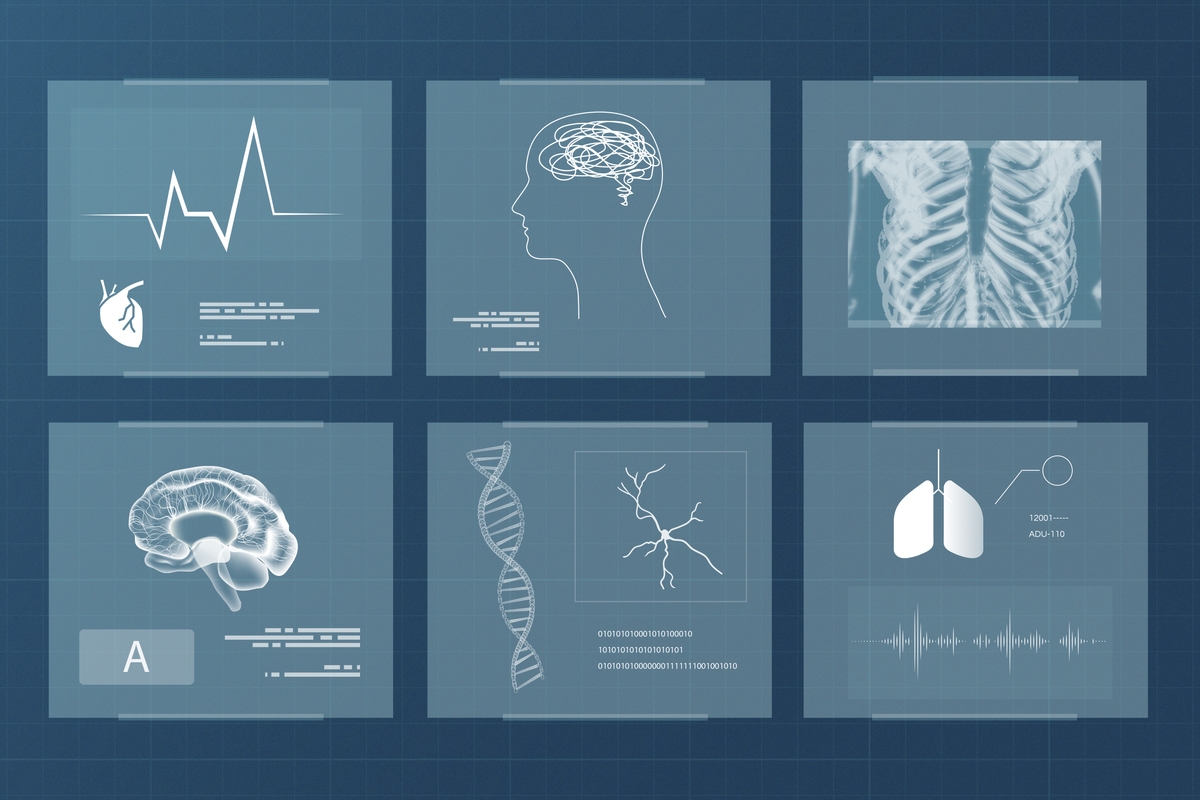Digital Communication for Healthtech, MedTech & Biotech companies
Digital Communication for Healthtech MedTech and Biotech companies:
How things have changed and will change this year
Digital communication is never as easy as it sounds. It’s not all about social media and content marketing. It is not about your website and the newsletters you send. These are all just tools. Digital communication is first and foremost about the messaging and above all the authenticity of the messaging.
What is Digital Communication anyway?
Digital communication is usually done with written or visual content, delivered on 3rd party channels to an audience that consumes this content in different ways, attentions spans and formats. The biggest conundrum of online communication is that to convey authenticity through such content you have to be transparent, direct and forthcoming.
This may be easier for B2C businesses selling products directly to consumers, but it is not as easy for B2B companies or startups, which often need to maintain a “stealth” mode until their innovative technology is out.
Digital Communication in the Medical world
In the Medical and healthcare sector, there is an added regulatory hurdle, as well as longer and more rigorous Intellectual Property processes and requirements. Medical innovation is more complex than other sectors, as it usually takes longer, involves a lot of research and collaborations with other institutions, often dependent on evidence coming from clinical trials which are subject to strict procedures, ethics and protection of privacy of the trial participants. Medical companies produce immense amounts of content, but at the same time they are not free to share most of it. The content they can share is often too scientific and makes for very unrelatable posts. To put it simply – what people cannot understand, they cannot trust.
This is why for these companies, until now, digital communication was limited to website, maybe LinkedIn and YouTube for a few videos but that’s about it. Most of the business development has traditionally been done at meetings, through collaborations and at conferences, directly opposite peers who are scientists, doctors or healthcare professionals.
2020 has presented a little challenge to the traditional marketing methods: Covid-19 and its restrictions on travel, gatherings, events and even on working from the office.
So – what now?
2021 is here and the new normal of marketing and communication for medical and healthcare companies is all digital. Conferences have been moved online, meeting are held remotely and in many companies people are still working from home.
Private Vs. Public communication
Some communication has always been and will remain “private” (as far as cyber security goes), in the sense that it is not in plain sight of the lay public. Internal reports, emails, content of meetings on videoconference etc. These have always been done away from the public eye and will continue to be done so, despite these too being communication that is done on digital channels.
But when we speak of “digital communication” we often refer to the more public, marketing side of it.
As mentioned above, pre-covid this was done at professional industry events and many of the heavier scientific information, the processes and even samples were presented and distributed either via poster sessions, printed materials and brochures, keynote speeches and booths at real-world, face to face events. These were backed by digital channels with companies in the medical realm using LinkedIn, Twitter, YouTube and other social media to present the fact they were participating at these events, but rarely sharing the actual information and science.
Why? Two reasons, as we already mentioned:
- Most content they have to share is something lay people will not understand and therefore it will foster mistrust rather than authenticity (“Why are they using this obscure science lingo? What are they trying to hide?”)
- Much of the information is protected by Intellectual property rights (patent granting processes are long to begin with but even more so in Healthtech) or by regulation and privacy laws (clinical trial information for example).
Now, the tables have turned and what was only the backup to “real” communication is now the main channel on which these companies can operate, if they are to have any visibility in the world. But these digital channels, these social media, blogs and websites are all open to the public in general. There is very little leeway in the ability to control who sees your content and you have to assume that whatever you put out there will, inevitably, also reach the eyes and screens of people you did not intend to see it for various reasons.
All your communication is now “public” and this calls for a shift in your mindset.
So how do you do it? How do you foster authenticity and trust when you cannot share all your information? How do you make your content accessible and relatable even if it’s heavy science? Or partial? How do you tell human stories without compromising privacy and regulation?
Well, there are a few ways to do that but the key ingredients for any company, and lifesciences and healthcare/tech companies included are:
- Stay relevant – use all the tools you can to create multiple types of content such as short testimonials, videos, infographics. These can be about your technology and innovation in general, they can be about the conditions your innovation revolves around, the challenges you set our to resolve. They do not need to be direct patient and clinician or product testimonials.
- Post around your direct product – if you cannot yet showcase your product or technology, communicate about the people it will help, foster trust among patients and clinicians by showing you know their pain and challenges.
- Highlight people! Showcase your team. Make it a point to shine the spotlight on the team as a whole, talking about how they work together but also on individuals. This will foster trust and make your target audiences (be they the users, the paying customers or the investors) understand that you care about people.
- Take it down a notch – communicating about science is important to young healthcare companies, but it can be overwhelming (more mature and established companies will have their scientific communication department handle this). Even if your own expertise (founder and team) is research and academia, most chances are your product will eventually serve patients or their caregivers. By becoming the educator and “translating” scientific papers and studies into lay-terms, you will add value to the life of the people who need to trust you and your products.
- Remember that in your field there are multiple “customers” – For medical/life science products there is almost always a user who is not necessarily the paying client and who is not the decision maker. Even if you develop products to be used in laboratories you will have the researcher as the user, the purchasing department as the payer and the head of the lab as the decision maker. In some cases you will also have a physician in the mix, who needs to test his/her patients. Your communication has to be addressing all these aspects with the trust and authenticity mentioned above. This means you have foster trust on the academic/professional level, on the pricing and business model level and on the implementation and support level. Your communication has to be around each of these topics, separately.
- Share everything you can – if there is anything you can share rather than hide, do so immediately. Balance is important and if you tend more towards the stealth/hiding mode, you will not be able to foster trust.
- Collaborate – even if you’re still in stealth, find ways to collaborate with Key Opinion Leaders, with potential partners and with potential customers (e.g early involvement of patient associations), be they users or payers, by hosting them on your communication channels and being a guest on theirs. Think about various ways let them communicate for you: videos, podcasts, guest blog posts, case studies, joint studies, etc. Anything that can be digitally showcased.
- Think about your communities – Digital channels allow you access to a much wider audience, faster and for free (to a great extent). Think about creating communities of patients and clinicians or of researchers even before your product is out. Start building the communities and dedicating the digital space to them, foster the personal network and connections so that when the product can be revealed, you will have a captive audience that you can mobilize.
- “Anonymity” ≠ “distrust” – Remember that in clinical/medical communication, even for companies whose products are already on the market, regulation and privacy laws require that you do not divulge personal information. It is ok to post clinical testimonials (and patient stories) without a real name or a full name of the person giving them. You can still create and share case studies and patient stories using initials or aliases and abstract imagery. This is also where the communities (see point 8 above) come into play – make sure they’re secure (private groups or password protected forum on your own website) and you will have an almost constant flow of materials that you can “anonymize” to create more content. Needless to say, always make sure to consult the latest regulations before publishing anything.
Final word & advice
There are many ways in which the forced transition to solely or mostly digital communication can actually help companies in the healthcare and Healthtech sectors, but in most cases the teams of these companies comprise brilliant scientists and researchers, who are as far away from digital communication as a digital marketer is from the gene sequencer…
At the end of the day, you still need to focus on your own work and innovation because the most important thing is to drive forward the impact that you can and will make on people’s lives.
So get help. Don’t try to go down the rabbit hole (and it is a rabbit hole!) of digital communication without an experienced and trustworthy consultant on your side, or hire someone in-house. It is not enough to be good at digital communication, whoever walks the path with you has to become a true partner and understand the field, the regulation, the do’s and don’ts of medical communication.
If you want to hear more, contact us! We’re here to help.



